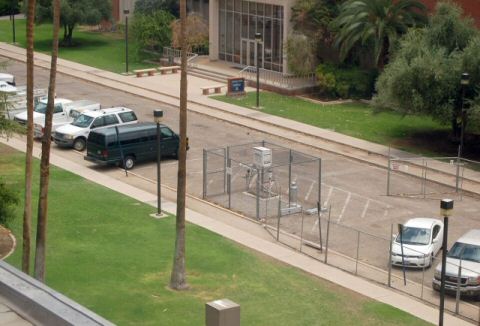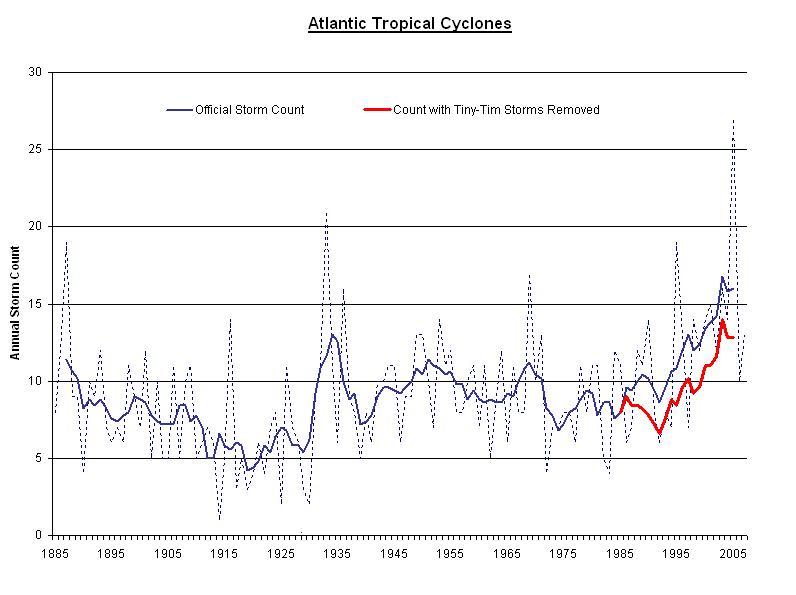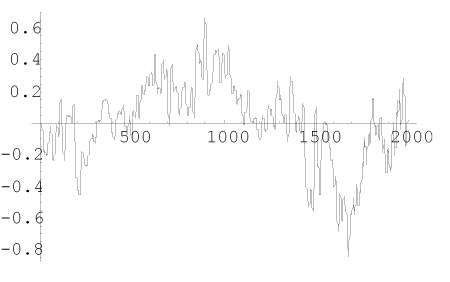Apparently, a video by Greg Craven called "How the World Ends" has been getting a lot of attention, supposedly because it prevents an irrefutable argument for immediatley taking drastic action to fight global warming (presumably by handing the world economy over to the UN). A newspaper asked me for my reponse, and I thought I would share it here as well:
Mr. Craven’s risk management argument is not a new one, though certainly he is a clever filmmaker. Mr. Craven argues that the potential outcomes of global warming are so bad that, even if we are uncertain and the risk is small, it is still worth it for the world to take aggressive action to abate CO2 today. He uses a number of examples, including car insurance. He argues that one buys car insurance without actually knowing if he is going to crash his car, or how much such a crash might cost. If I had to summarize my response to Mr. Craven, I would retort "Yes, but you wouldn’t pay $35,000 for car insurance if you only had a $30,000 car?" Costs matter a lot, as does the magnitude of risk. They can’t just be shuffled off to the side.
Mr. Craven’s video is a clever kind of sleight of hand, built to disguise the fact that it rests on three very shaky points:
- At the 5:24 mark, he pins the entire argument that global warming costs and probabilities outweigh the costs of CO2 abatement on statements by the NAS and NAAS. In the beginning of the video, he says that he will make an argument that does not rely on wading into the scientific debate. But that is in fact wrong — his whole argument falls apart if one does not choose to rely on these two scientific bodies as authorities, or even if one does not agree with Mr. Craven’s reading of these authorities (which I can attest is ambiguous from having actually read the NAS report). The NAS study has been portrayed by climate catastrophists as saying many things it did not actually say. It did say that man was probably warming the climate some (which folks like myself do not deny). The report did not say, as Mr. Craven claims, that immediate action was less costly than allowing global warming to happen. It is easy to get the impression Mr. Craven has of the NAS report from reading media summaries of that report, but impossible to have that view had he actually read the report himself. This is fairly typical of climate journalism (sorry) but the media reports and press releases almost never match the real content of the science. This is a well-documented problem with the UN IPCC, where the political appointees crafted the summary first, and then sent it around to scientists and asked them to make sure their sections of the science matched the politician’s summary.
- Mr. Craven’s argument for prioritizing global warming above every other policy issue relies on global warming being, literally, the end of civilization: Climate Armageddon. He argues for this view at the 8:21 mark by positing that climate has a tipping point, beyond which it goes unstable and bad stuff accelerates. Tipping points, and in fact most catastrophic climate forecasts, are based on assumptions that the climate is dominated by positive feedback, assumptions for which there is no scientific proof! Yes, CO2 can warm the world, and most scientists agree that it will warm the world about a degree C for a doubling in CO2 concentrations. Even catastrophic forecasts begin with this assumption, but then get to 4, 5, 6 degree warming forecasts by assuming there are positive feedbacks that amplify the temperature change. But the climate system is one that has remained stable, within fairly narrow bounds, for millions of years. This despite enormous perturbations such as meteors and volcanoes and changes in the sun. Had the climate been dominated by positive feedback, or even feedback that is greater than one (which leads to tipping points) then the climate would have run away long ago. Most natural processes are not dominated by positive feedback and most certainly don’t have such tipping points. Scientists always assume a natural process is dominated by negative feedback until proven otherwise, except, I guess, in climate. The tipping point argument is an invention of late by climate scientists trying to justify catastrophic warming forecasts that greatly exceed the warming in the historical data. When one looks at warming over the last century, it is hard to get a forecast much higher than about a degree for warming over the next century. What if I told you that the relationship between CO2 and temperature is a diminishing curve, such that each additional unit of CO2 has less effect on temperature than the last. Would you believe me? Probably not, but it is a scientific fact, even among climate scientists. Take from it what you will that some climate scientists posit an accelerating effect from a decelerating relationship.
This is another bit of sleight of hand that goes on among climate catastrophists. They always retort that the science is really strong and complete. Yes, but for what proposition? I would agree that the science is good for a first proposition that the world is warming some, and that a part of that is due to CO2, and that we will see some more man-made warming in the next century, on the order of about a degree C (if the sun doesn’t do anything radical). But the science is at best equivocal, and more accurately nearly non-existent, for the second proposition that the climate is dominated by positive feedbacks and will run away once it reaches some tipping point. The weight of scientific opinion is against this latter proposition. But catastrophists try to hide this tipping point proposition, for which there is no evidence, under the umbrella of support for the first proposition. And the media (sorry again) lets them get away with it. By the way, the science really gets sloppy and weak if we get to the arena of projected outcomes, such as sea levels and hurricanes. For example, most scientific forecasts believe the sea level rise over the next century from even four degrees of warming would be about 15 inches, not the 20 feet Al Gore keeps quoting. Further, every story about global warming likes to talk about droughts, but if the world is warming, megatons more water will be evaporated into the atmosphere. Rain on average has to increase, not decrease, in a warming world.
- Mr. Craven discusses the cost of abating CO2 and fighting global warming in the film at minute, uh, minute…. Oh, wait, he never mentions it. He does a whole video on costs and risks and prioritization of our efforts without every worrying about this key element. It would be like sitting though a 10 minute presentation on car insurance talking about potential things that could damage your car and the risks of each and then asking you to buy the insurance without once telling you how much the insurance costs.
I have made climate videos too (both more fact-based but less dynamic than Mr. Craven’s), and I can take you through the calculation that Mr. Craven omits. The world economy is now about $60 trillion. If, over the next 100 years, it grows at 3% real, then in 2108 it will be $1,153 trillion in size. OK, now lets assume that fighting global warming knocks 1 percentage point off world economic growth, for a new growth of 2% real. Then, in 2108 our world economy would only be $435 trillion in size. In other words, reducing world economic growth over the next century reduces the size of the world economy in 2108 by $718 trillion per year. So, is the cost of global warming greater than $718 trillion per year? Further, if we begin such an abatement program as was desired by many environmental leaders in Bali, then these abatement costs in terms of lost growth and poverty will be certain. In our decision-making model, we must pencil them in at 100%. And how about warming? If we assume the really harsh results are, say, 20% certainty, then their costs must be five times higher than these abatement costs to justify action. Does anyone really expect that the cost of warming will be 5 x $718 trillion = $3.6 quadrillion per year?
Surely you are thinking I did something wrong in this analysis. How can it be so much? Surely I must be estimating that wrong. Well, yes I am. I am probably underestimating the cost. The strong global warming catastrophists are arguing that CO2 output needs to be reduced to 10-30% less than it was in 1990 (update: Hillary Clinton proposes 80% less than 1990). Given current technologies, this likely will mean negative economic growth over the next decades. The advocates for such action even admit this. There is no way we can meet these targets and let China and India develop. This means that a billion plus people who are on the verge of stepping out of poverty for the first time ever will have to be told, sorry, you must stay poor. We’re talking about more disease, more death, more vulnerability to natural disasters and everything else poverty brings. The recent Bangladesh cyclone is a great example. Thousands died in that storm, mainly because they were vulnerable due to their poverty. Horrendous hurricanes have hit the US in recent decades and we have not had thousands die. The reason is wealth. Wealth matters. We think of wealth as a Wall Street guy buying a new Ferrari, but when we talk about the world, wealth is the ability to build a strong enough house and have good enough emergency systems and transportation to not die in a hurricane. It is why a very good argument can be made that even if man-made global warming causes a few more hurricanes, it may well be better to be wealthier and ready to deal with them than be poorer and more vulnerable to fewer storms.
Catastrophists try to lull us with cute little messages about recycling and carpooling that make the solution seem so easy. But this is just more sleight of hand, to distract us from the fact that all of us will be made poorer by abatement efforts. If you told folks in the US that their economy would be like India (as did the Stern report), I don’t think the video would have had many takers. Which is not to say we should never prepare for anything, but that costs matter. Nothing we have done to date in environmental improvements even comes orders of magnitude within the realm of the CO2 abatement targets being discussed. Why is CO2 different? To date, we have always gone ofter contaminants. Lead in gasoline was bad so we removed it and found different additives. Sulfur in fuel might cause acid rain, so we took it out. Effluent is polluting rivers so it needs to be disposed of more carefully. But CO2 is fundamental to combustion of anything but a few elements (like hydrogen). We can’t keep our economy, which runs on fossil fuels, chugging along by refining the fuel a bit more. We have to shut down combustion altogether to get rid of CO2.
Finally, it is always interesting to me how the many children of the 1960’s, who used to argue for personal liberties and who now make up so much of the global warming movement, put so little value on the loss of freedoms. One additional large cost to CO2 abatement will be the loss of freedoms we experience, from the small (reduced choice in cars) to the problematic (limits on airplane flights) to the real hardships (limits on children). Any crash effort to reduce CO2 emissions will entail substantial erosions in individual freedoms which, if they don’t have costs to climate catastrophists, certainly have a cost to me. [update] From here
{Mayer} Hillman, senior fellow emeritus at the Policy Studies Institute, says carbon rationing is the only way to ensure that the world avoids the worst effects of climate change. And he says that the problems caused by burning fossil fuels are so serious that governments might have to implement rationing against the will of the people.
“When the chips are down I think democracy is a less important goal than is the protection of the planet from the death of life, the end of life on it,” he says. “This has got to be imposed on people whether they like it or not.” [update]
Postscript: About a century ago, many leading scientists thought there were intelligent, civilization-building creatures on Mars. Percival Lowell, who had far more prominence as a scientist than any of today’s climate scientists, was sure of it. Clearly, some thought that these beings posed risks to our civilization. H.G. Wells and, even decades later, Orson Wells played on these fears. What if we had initiated a huge program to build defense systems against such a threat. Sure, the threat was unknown, but could we really wait until we are sure? What if those preparations had cost a full percentage of our economic growth rate, leaving us with only a third of the income we might have had. Everyone would have only a third of the income they do today, and many of the conveniences and medicines and facilities we take for granted today would likely not exist, or only exist as reach people’s toys. And would we have been safer from any Martians, given we would have been building defenses with 1900-era rather than more modern technologies?
Update: fixed Mr. Craven’s name in the post title




